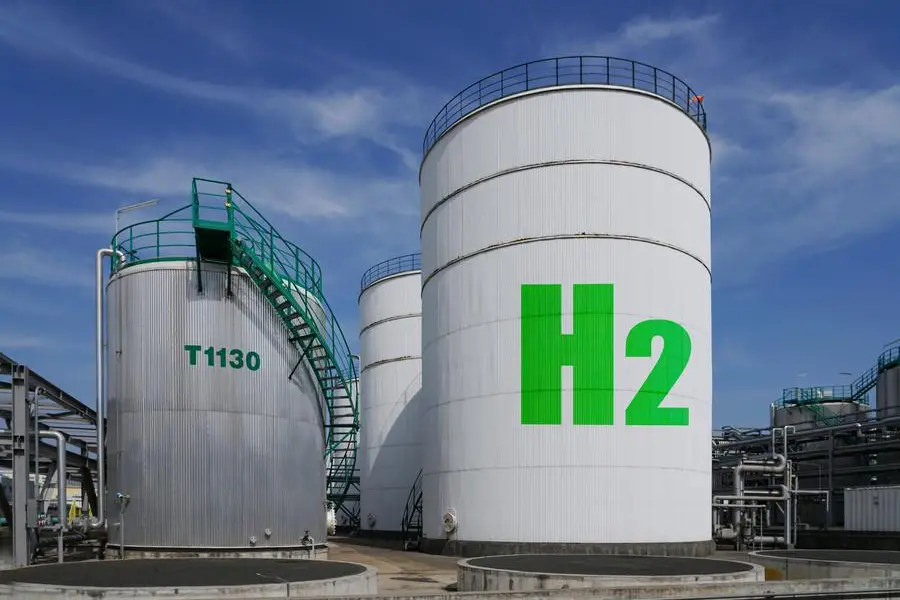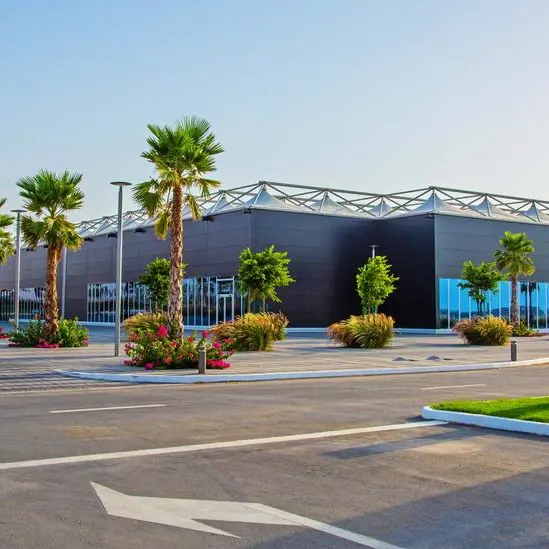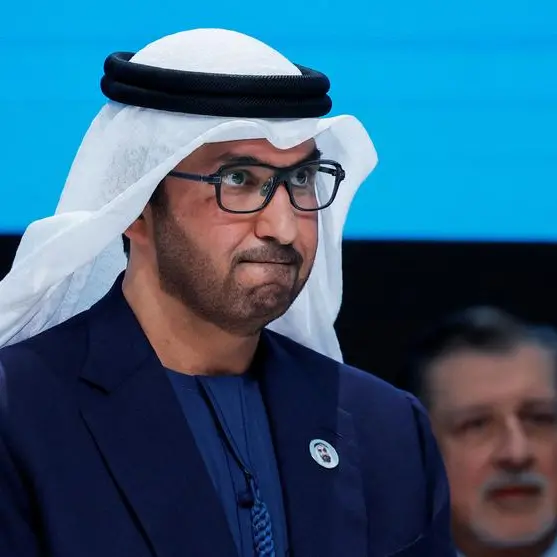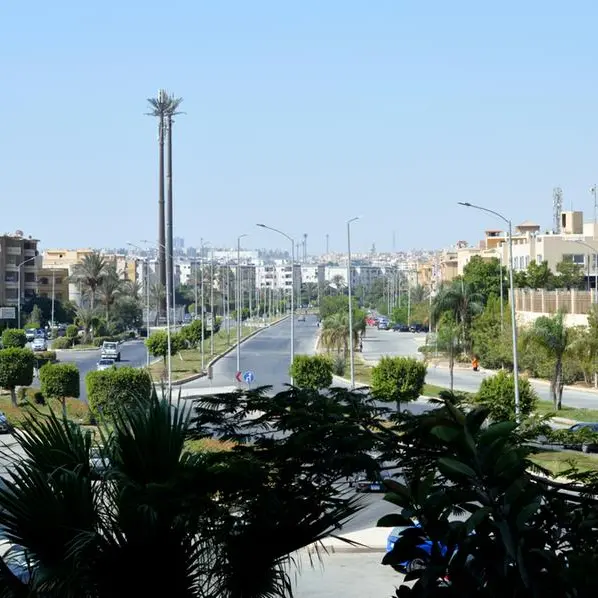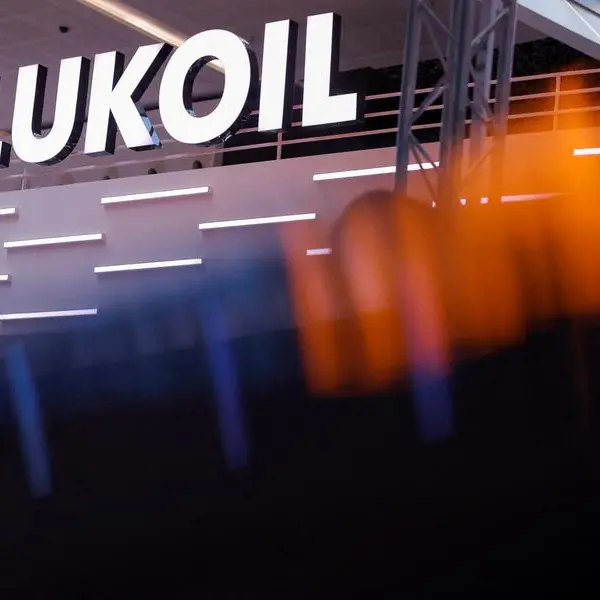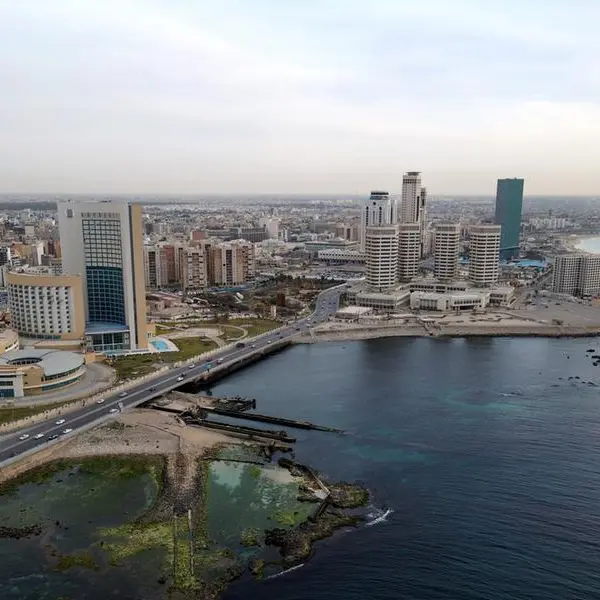PHOTO
Sovereign funds and other government entities in the Gulf states and Egypt have partnered with international energy firms, investing billions of dollars to develop green hydrogen plants.
Hydrogen, which is the lightest and most abundant element in the universe, can be burned as a fuel, producing only water as a by-product, used to store excess energy produced by renewable electricity, or converted into other substances. It is also a vital ingredient in many industrial processes such as steelmaking.
Historically, hydrogen has been manufactured from coal or gas in a process that creates huge carbon dioxide emissions. But its green variant, which currently represents less than 1% of global production, uses electrolysers powered by renewable electricity to split water into its constituent elements – oxygen and hydrogen - and so is carbon-free.
Cost remains a key challenge, although a European Investment Bank report says green hydrogen can be price competitive versus conventional hydrogen by 2030.
Saudi Arabia has pledged to become net zero in terms of carbon emissions by 2060 and the United Arab Emirates vows to do likewise by 2050. Both see green hydrogen as key to meeting their commitments.
Saudi Arabia is building a green hydrogen plant that will be the world’s largest, producing 219,000 tonnes of hydrogen annually. The cost of the project has ballooned to $8.5 billion from $5 billion previously.
State-owned NEOM, U.S. company Air Products and Saudi Arabia’s ACWA each hold a one-third stake in the NEOM Green Hydrogen Company. Production will start in 2026 and will mitigate 5 million metric tonnes of carbon emissions each year, ACWA claims.
Abu Dhabi National Energy Company (TAQA) will produce green hydrogen that will be used to manufacture green steel in partnership with Emirates Steel, while in February TAQA signed a memorandum of understanding (MoU) with Japan’s top power generator JERA to develop thermal power and other green energy projects in the Middle East.
Another Abu Dhabi government entity, Masdar, aims to produce up to 1 million tonnes of green hydrogen annually by 2030 via various joint venture projects that it says will establish the emirate as a global hub for hydrogen production and export. It predicts half of this output will be produced in the emirate.
Masdar has teamed up with national carrier Etihad Airways, Siemens Energy, TotalEnergies and others to develop green hydrogen for use in sustainable aviation fuels.
Masdar is in a consortium building a 200 megawatt (MW) green hydrogen plant in Abu Dhabi as part of a wider $5 billion “strategic alliance” with French utility Engie and will also be co-owner of a 2,000 MW offshore wind and green hydrogen project in Azerbaijan.
The Abu Dhabi firm has signed an agreement with Egypt to develop green hydrogen plants with a combined capacity of 4,000 MW and has agreed to invest in a green hydrogen plant in England.
Egypt’s hydrogen plans
Egypt in December signed an MoU with BP to help develop the country’s green hydrogen industry. It will conduct various studies to identify locations for green hydrogen plants as part of plans to make Egypt an export hub for the gas.
The European Bank for Reconstruction and Development (EBRD), meanwhile, will lend Egypt $80 million to build a 100 MW electrolyser at its first green hydrogen plant that will produce 15,000 tonnes annually.
Energy China will build a green hydrogen plant in Egypt with an annual capacity of 140,000 tonnes. Overall, Egypt has signed around a dozen deals with foreign firms to build various green hydrogen facilities, according to The Africa Report.
Oman is also betting big on green hydrogen, launching Hydrom in 2022. Like Abu Dhabi, the sultanate aims to produce 1 million tonnes of green hydrogen annually by 2030. Hydrom extended the deadline for bids to build its first green hydrogen plant to March 15, with the winners due to be announced in April.
Geothermal
Turkey is the Middle East’s only country to have developed geothermal electricity. In January, the Saudi Geological Survey (SGS) signed an MoU with the kingdom’s energy ministry to explore geothermal energy, which is sourced from heat below the earth’s surface. Saudi Arabia aims to have 1,000 MW of geothermal electricity capacity by 2040, according to IRENA.
A geothermal plant produces about one-sixth of the carbon dioxide (CO2) of a gas-fired power station of the same capacity.
Saudi Arabia has “vast geothermal energy resources”, according to the King Abdullah University of Science and Technology (KAUST), particularly along and near its Red Sea coast thanks to a high subterranean heat-flow from the region’s little-known volcanic fields.
KAUST is assessing the geothermal potential of two areas – one within the vast $500 billion NEOM region near Egypt and Jordan and a second about 250 kilometres south in Al Wajh.
(Reporting by Matt Smith; editing by Seban Scaria)
